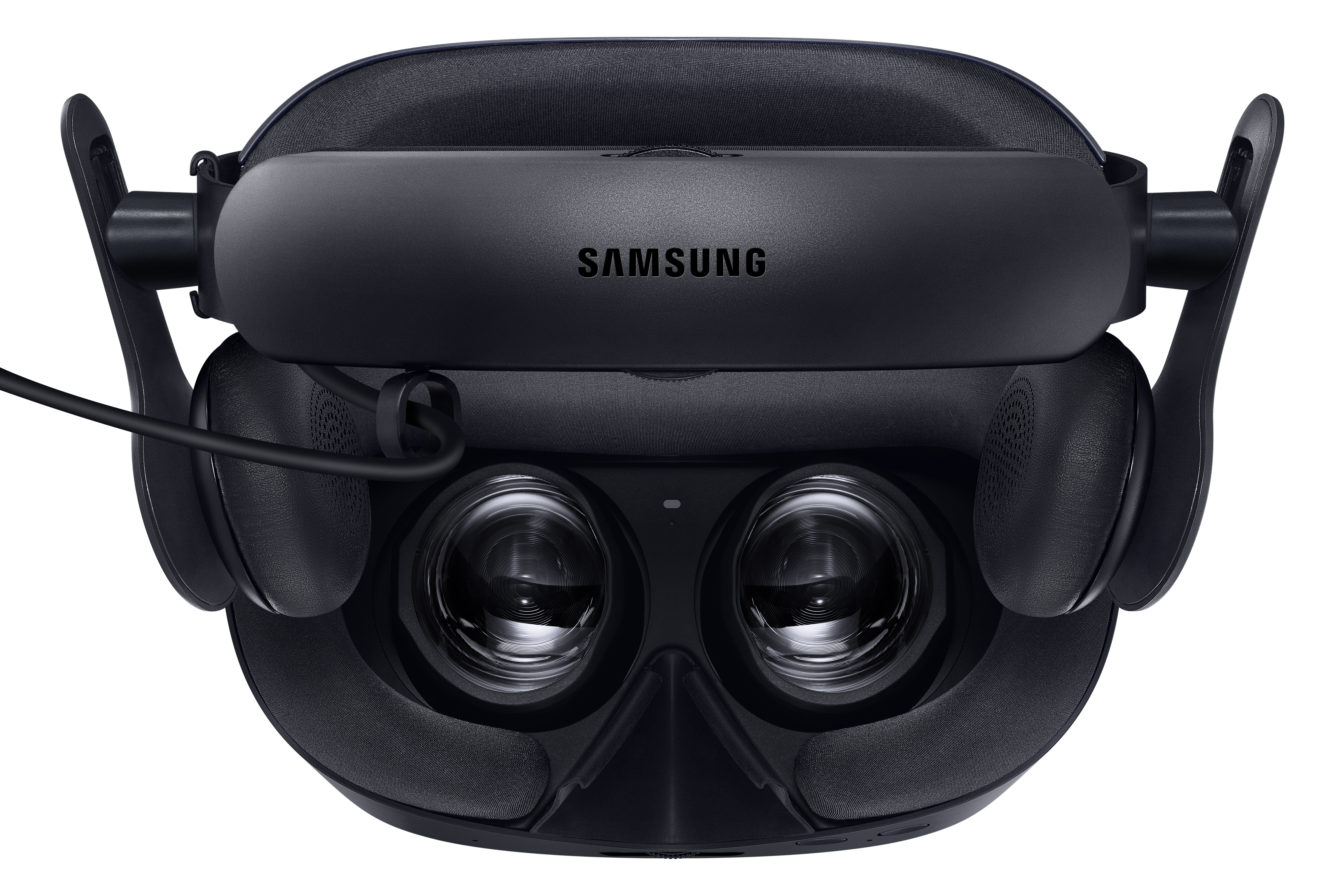
Samsung’s penchant for curves may no longer be limited to its current line of curved display televisions.
In fact, it seems Samsung’s curved displays might soon be featured in its future virtual reality headsets, according to a recent design patent the technology conglomerate filed with the U.S. Patent and Trademark Office.
The patent, filed last year and published last week, mentions a “curved display” paired with a “mounting surface having a curvature” as well. Samsung’s previous forays into VR, such as the HMD Odyssey Plus (pictured above), already come with OLED displays and so it stands to reason that this new design patent may indicate that a curved OLED display may be forthcoming.
Samsung’s contributions to virtual reality tech have so far been well-received and include rave reviews for both its Gear VR and Odyssey headsets. Both have relatively minor drawbacks, such as only being supported by a few devices (Gear VR) and generally costing a bit more than its competitors (Odyssey). But since both of Samsung’s current VR headset lines seem to be doing just fine with their flat displays, does Samsung really need to add a VR headset with a curved display?
The answer? It couldn’t hurt to at least try. A curved OLED display might just be the VR innovation that creates a more immersive virtual reality experience.
As TechRadar notes, curved displays can provide “a wider viewing angle” which could enhance a VR headset user’s 3D experience and overall sense of peripheral vision. Plus, flat screens are less adept at providing a more complete 180-degree view.
If successful, a curved display design would be a welcome addition to Samsung’s current collection of VR headsets, especially if it manages to partner well with another company’s offerings as it did with Microsoft’s Mixed Reality and its own Odyssey headset.
(Picture it: A Samsung VR curved OLED display headset paired with Feelreal’s “odor vision” VR mask.)
As always, the possibilities with VR are exciting and Samsung’s steps toward headsets with curved displays are no exception. Now that the design patent is filed, we might be closer to a more complete VR experience.


